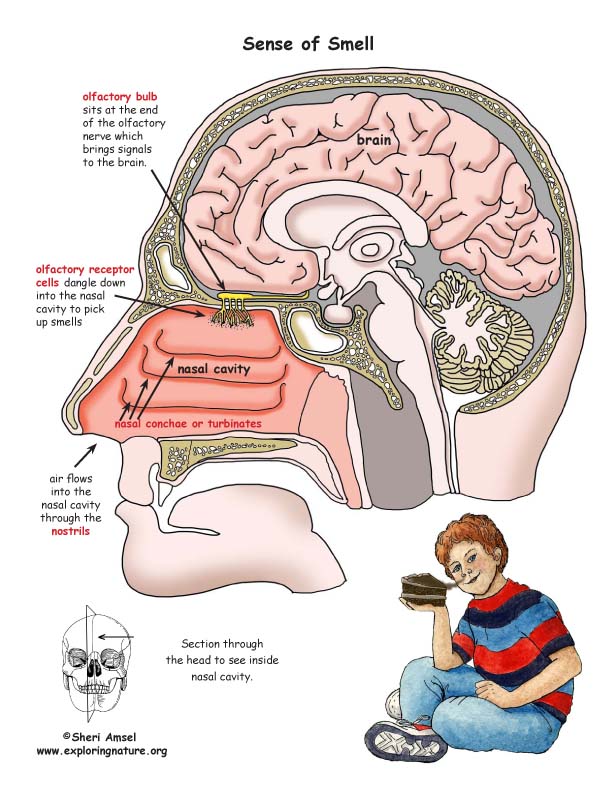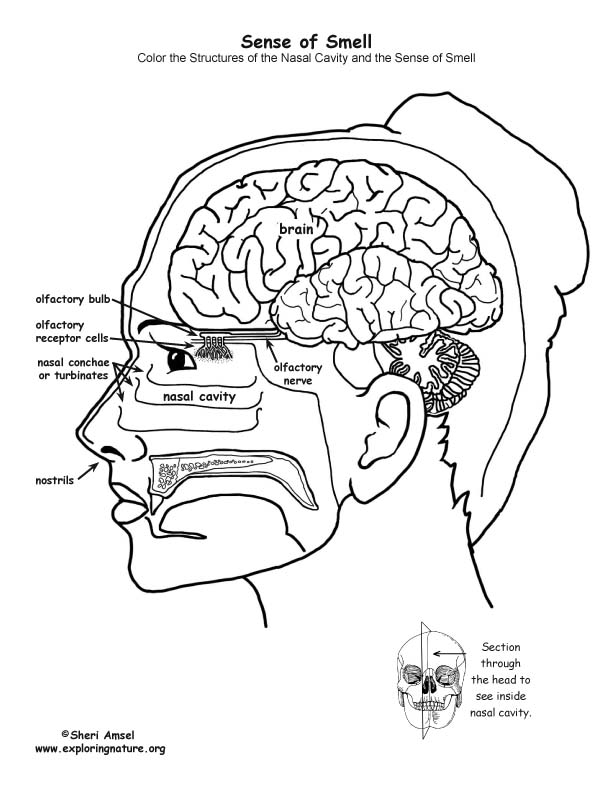

Nose, nasal conchae, nasal cavity.
Inside your nose is an open area called the nasal cavity. On the roof of the nasal cavity are special smell cells called olfactory receptor cells. Olfactory means sense of smell. They olfactory cells hang down through small holes in the bone between the brain and nasal cavity. The olfactory cells come from a bulb (the olfactory bulb) at then end of nerve that picks up smell - the olfactory nerve. The olfactory nerve brings the smell signal to the brain. Smells can be powerful signals. They can cause you to feel good, yucky or even scared. Think about the smell of cookies baking or the smell of rotten food or the smell of smoke inside a building.
The nasal cavity helps with sense of smell. It has grooves on the wall called nasal conchae or turbinates. Their shape helps the air you breathe in swirl around. They also make up more space for the air to touch the nasal cavity walls which are lined with warm, wet tissue. The nasal tissue warms the air and helps filter out dust, which sticks it. Then the warm, cleaned air goes on to the lungs.
When you smell something and sniff at it, you are bringing in more of the scent to flow by your olfactory receptor cells.
–––> The olfactory nerve will send the signal to your brain.
–––> Your brain will tell you what the smell is and give you a signal of what to do.
Some of the things the brain tells your body to do you don’t even think about – like the smell of baking cookies making your mouth water or your stomach rumble.
Some signals make you think about things you you may or may not decide to do – like go get a cookie and eat it.
The same can be said of bad smells. The smell of rotten food may cause your nose to wrinkle and your head to move away, but then you may or may not decide to take the garbage out!
The smell of smoke may cause a sense of fear but then hopefully you will decide to leave the building and call for help. All these reactions are from smells.
Taste and smell have different receptor cells, but taste depends a lot on smell. Most of taste (about 80%) comes from smell. Our smell receptors are not in the best place for smelling (compared to a fox with a long nose). That is why we have to take in a big sniff when we are trying smell something.

